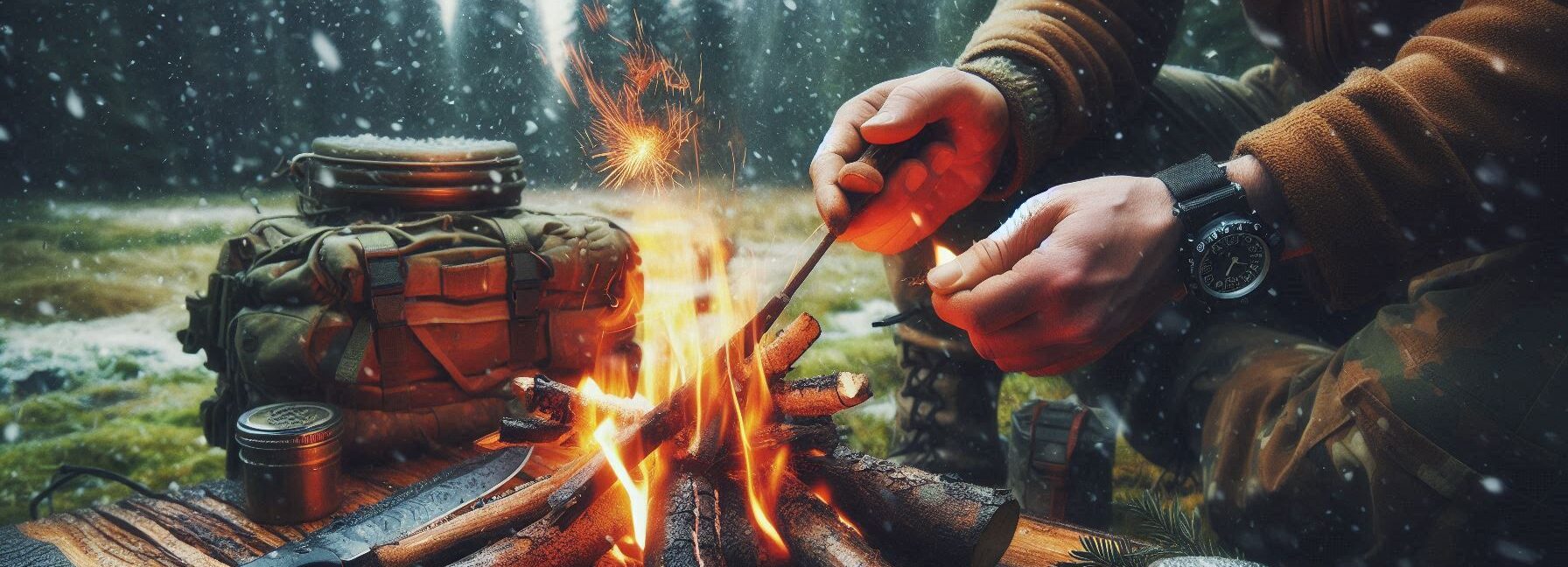Please Note: This post may contain affiliate links. If you click one of them, we may receive a commission at no extra cost to you. As an Amazon Associate, I earn from qualifying purchases.
Last Updated on November 1, 2025 by Kevin Collier
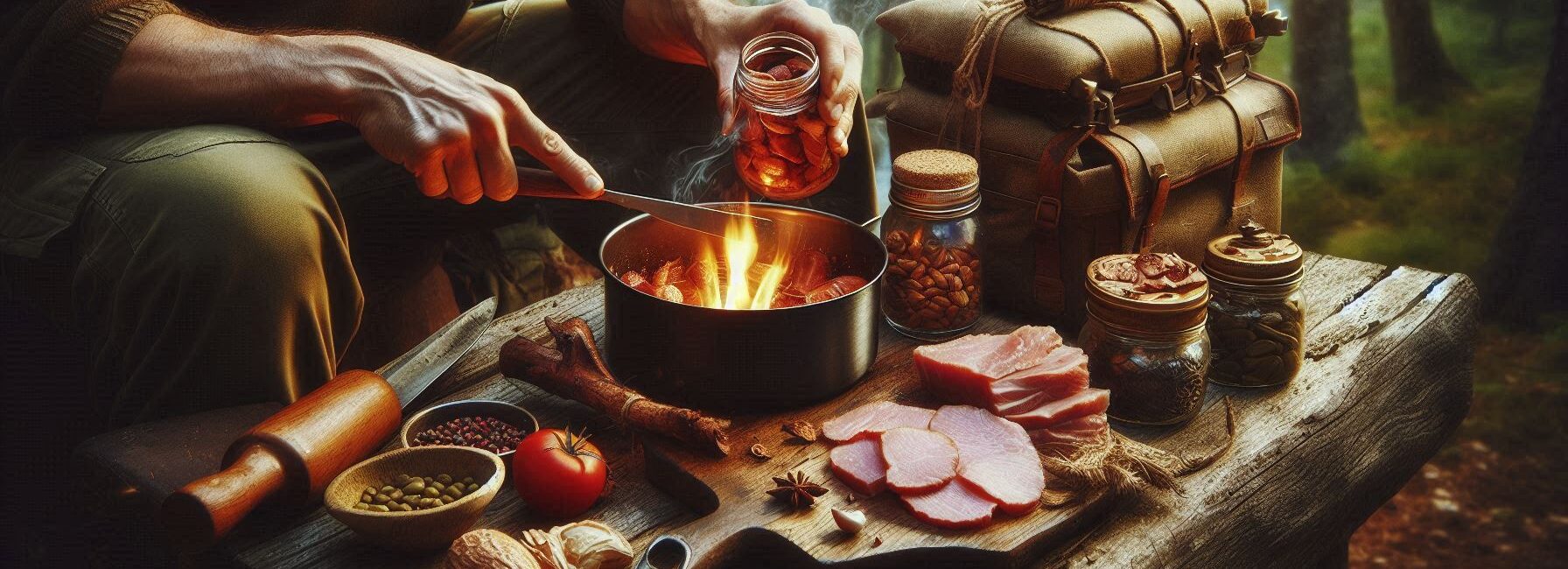
Top Takeaways and Key Concepts
- Pack essential gear: sturdy knife, heat source, and containers for cooking.
- Forage safe foods like nuts, berries, and edible wild plants.
- Cook creatively: roast on sticks, boil in pots, or bake on stones.
- Use local herbs or natural flavorings to enhance meal taste.
- Verify edibility and maintain hygiene to prevent illness outdoors.
Picture this: you’re in the woods, surrounded by trees and fresh air. It's beautiful, right? But then your stomach starts growling, and it feels loud—like a bear waking up from hibernation.
No pots, no pans, no microwave. Just you. Some firewood. Maybe a few berries you’re not sure about. Oh boy.
Welcome to survival cooking! This isn’t just about eating to stay alive. Nope. It’s about making “food” into something really tasty with very little stuff. You don’t need a fancy kitchen. Just some creativity and a bit of patience.
Think about it. A fire can be your best friend. You can roast veggies right on the coals. Just a stick and some good timing. Slice those berries, toss them in with honey if you have it. Instant snack!
Got a small pot? Awesome! You can boil water, make some wild tea, or even cook grains. Just gather some leaves and flowers. Make it special. Nature has so much to offer.
It's fun to try new things sometimes. You might locate wild mushrooms or plants that you can eat. Just make sure you know what's safe. It's like a search for riches. A real adventure.
Are you feeling a little unsure? That's OK. Everyone has to start somewhere. It's not about being perfect. It's all about having fun with it. Laugh it off if it doesn't taste good. Nature doesn't care.
So, when you are hungry, realize that it's all part of the experience. Some of your best stories will come from cooking in the woods. You will learn, grow, and maybe even make something tasty. Who knows? You might really like those dinners in the woods!
Contents of This Page
*** Shop for Survival Gear - Tools - Kits ***
Survival Gear - Bags and Backpacks - Knives - Boots/Footwear - Communication
Outdoor Cooking - Gloves - Hydration - Dry Boxes - Water Filtration Systems
Tents - Sleeping Bags - First Aid Kits - Multi-Tools - Flashlights - Fire Starters
Navigation - Survival Food - Night Vision - Headlamps - Stun Guns - Binoculars
1. The Essentials of Survival Cooking Gear
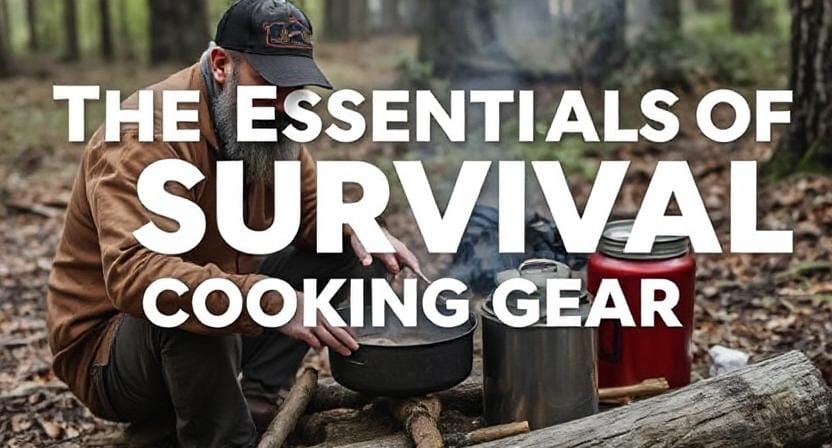
First things first—what do we need? Surprisingly, you don’t require much more than a few basic items that would fit snugly in your backpack (or perhaps in that giant fanny pack you insist on wearing).
A sturdy knife is your best friend here; it can chop, slice, and occasionally defend against rogue squirrels attempting to steal your food.
Next up is some form of heat source. If you've managed to start a fire (kudos!), you're halfway there! But if flames aren’t your thing yet (we've all been there), consider bringing along a small camping stove or even an old-fashioned pot for boiling water and cooking food.
Don’t forget about containers! Whether it's an empty soda can or an actual camping pot, you'll need something to hold your culinary creations—or at least something that can catch any drips if things go awry (which they probably will).
2. Finding Ingredients: Nature's Grocery Store
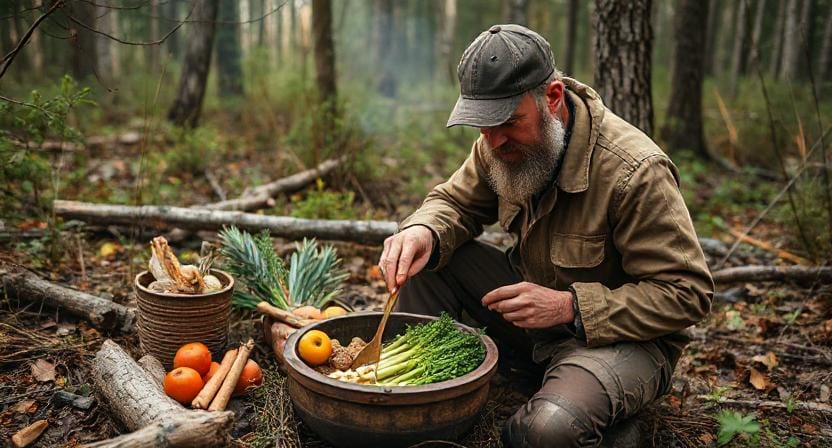
Now comes the fun part: foraging! Nature has provided us with countless edible options—if you know where to look. You might be wondering how I became such an expert forager.
Well, let’s just say I once mistook wild mushrooms for dinner and ended up eating granola bars instead—an experience I won’t soon forget!
Start with the basics: nuts and berries are usually safe bets (unless you’re allergic or have that one friend who insists all berries should be avoided because they “look suspicious”). Look for acorns or pine nuts—they're like nature's little snack packs!
If you're feeling brave—and maybe slightly reckless—you can also try catching fish or small game if local laws allow it. Just remember: fishing requires patience and possibly some bait (a hot dog works wonders when you're desperate).
3. Cooking Techniques: Fire Up Your Imagination
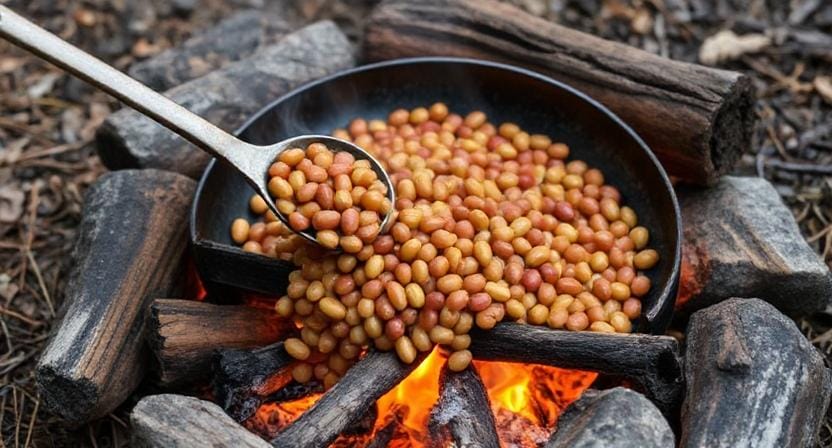
Okay, now we’ve got our ingredients; let’s get cooking! With minimal gear at hand, creativity becomes key—not unlike my attempts at assembling IKEA furniture without instructions.
Direct Heat Cooking: This is as simple as it sounds—hold your food over the fire on a stick like some kind of caveman gourmet chef. Skewering pieces of meat or vegetables onto sticks is easy and effective.
Boiling: If you've got water handy—and trust me, you’ll want water—you can boil whatever you've gathered in your trusty pot or makeshift container over the fire.
Toss in those wild greens and whatever protein you've caught; suddenly you're serving up “Wilderness Stew” like it's on the menu at a five-star restaurant.
Baking: Yes, baking! If you have flat stones available near the campfire (because who doesn’t carry around flat stones?), place them next to the heat until they warm up nicely then use them as griddles for making pancakes from flour mixed with water—a true survival delicacy!
4. Spice Things Up: Flavor Without Frills
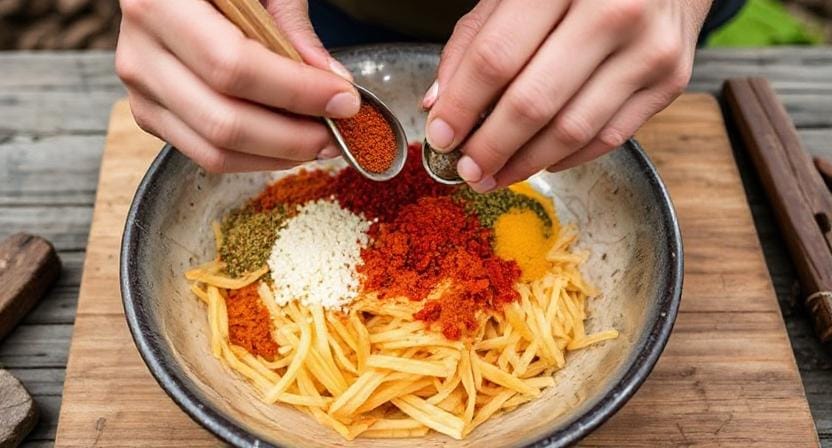
Let’s face it: when camping out in the wilds of nature, bland food is inevitable unless you bring along some spices from home—which could feel like packing too much luggage when going hiking! However, don't despair; flavor doesn't always come from jars!
Herbs are often found right under our noses—in fact during my last outing I discovered thyme growing by my tent while searching for my misplaced shoe… again! Use whatever herbs are nearby—they’ll elevate even the most basic meal into something resembling real cuisine.
And speaking of cuisine… did someone mention hot sauce? Okay fine—I might just be obsessed with spicy flavors—but seriously consider finding ways to add zest through natural sources like wild garlic or onions if available!
5. Safety First: Avoiding Culinary Catastrophes
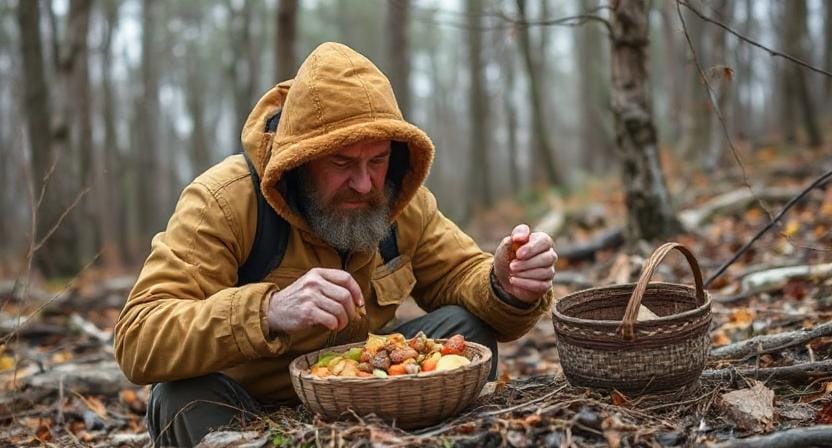
While preparing meals outdoors can feel adventurous—it also requires caution because nobody wants their survival story to include “and then they ate something poisonous.”
Always double-check what you're consuming before popping anything into your mouth; remember my earlier mushroom incident?
Pay attention to signs indicating edibility—like leaves’ shapes or color variations among plants—and consult resources if unsure about certain foods beforehand so nothing leads down an unfortunate path toward regret-filled stomach cramps later on.
Additionally keep hygiene practices in mind—even out here dirtiness shouldn’t take precedence over cleanliness since illness isn’t exactly conducive towards enjoying nature's splendor either!
Conclusion: Embrace Your Inner Wilderness Chef
At first, cooking for survival could seem intimidating. Think of it as working with nature. It's like being a chef, except without the yelling. I mean, Gordon Ramsay really needs to calm down sometimes, doesn't he?
Picture getting everything you need around the campfire. A few sticks and maybe a rock to cook on. Not too fancy. Just trying to become comfortable and make something tasty.
You'll need some simple tools. You can use a sturdy stick as a skewer to roast. A tiny pot can help you boil water. You can be quite inventive. Find the things you need. You might find wild vegetables, berries, or even mushrooms. Be careful and check what you choose again. First, safety.
Imagine cooking outside under the stars. The smell of vegetables roasting fills the air. Instead of boring granola bars, you're eating like a king or queen. That sounds good, doesn't it?
So enjoy this journey. Be ready when hunger strikes. Keep those tips in your head. It feels like having superpowers in the outdoors.
And who knows? Someone might even come up with the idea of delivering pizza in the woods one day. But for now, you have this! Enjoy cooking, and let the beauty around you make every meal unique.
Frequently Asked Questions
What basic gear is required for survival cooking?
A sturdy knife, a reliable heat source, and any small container or pot are enough to prepare basic meals outdoors.
Can you cook directly over fire without cookware?
Yes. Food can be roasted on sticks or heated on pre-warmed stones placed near hot coals.
Is foraging safe when cooking in the wild?
Only if plants, nuts, or berries are correctly identified as edible. Misidentification can cause illness.
What types of foods are easiest to prepare with minimal gear?
Roots, nuts, berries, small game, and fish are common and suitable for roasting, boiling, or stone-baking.
How can food be flavored outdoors without seasoning packets?
Local herbs, wild onions, and aromatic leaves can enhance flavor naturally and reduce blandness.
Why is boiling important in survival cooking?
Boiling purifies water, kills harmful microbes, and cooks softer foods like greens or grains more safely.
How can you avoid food-borne sickness while cooking outdoors?
Maintain clean hands, verify edible plants, and avoid undercooked foods to minimize illness risk.
Suggested Resources:
Survival Cooking Tips
https://www.survivaltips.com/cooking-in-the-wild
Outdoor Cooking Techniques
https://www.outdoorlife.com/outdoor-cooking-techniques/
Foraging Edible Plants
https://www.ediblewildplants.com/foraging-guide

Kevin Collier is a seasoned survivalist and expert in prepping and homesteading, contributing to WiseSurvive.com. With a deep-rooted passion for self-sufficiency and outdoor survival skills, Kevin shares practical advice, strategies, and resources to help individuals prepare for any challenge. His informative articles cover a range of topics, from essential survival techniques to sustainable living practices, empowering readers to thrive in any situation. Whether you're a novice or a seasoned prepper, Kevin's insights will inspire you to take charge of your readiness and build resilience for the future.




